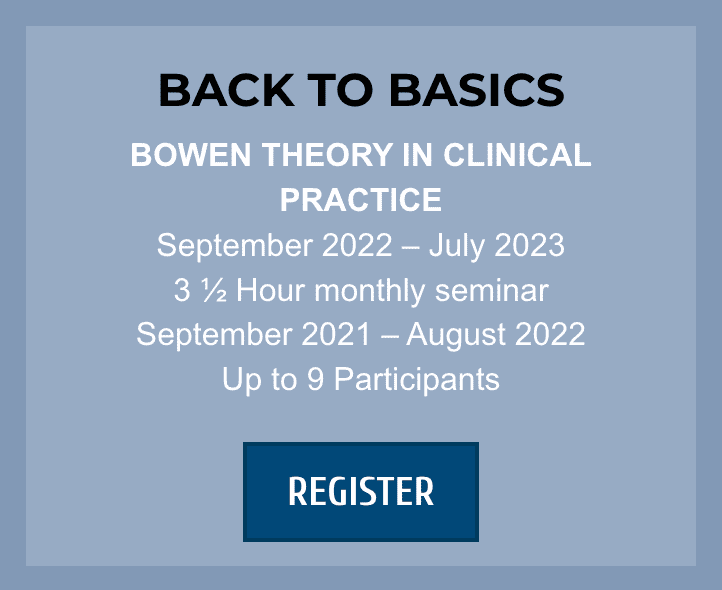This research project investigates changes in physiology and functioning that accompany working on differentiation of self, the basis for family systems psychotherapy based in Bowen theory. Participants
- Complete a multigenerational family history
- Monitor physiological reactivity, cortisol, and brain wave activity on a quarterly basis
- Record blood sugar levels, heart rate, and peak flow oxygen levels daily
- Date and document contact with family members
- Date and describe nodal events in the family
- Date and describe particular steps toward differentiation of self
- Document the occurrence of symptoms in self and significant family members.
- Complete the Skowron Differentiation of Self Inventory periodically
8 people, all participants in the Bowen Center Postgraduate Program, volunteered to participate in this research project from September, 2013 – June, 2014. Six of those continued for a second year and an additional person began in September, 2014.
The data for each participant from Year 1 is being analyzed on a Single Case Study basis and will then studied for comparisons.
The first Case Study is described in the attached PDF from a Poster Presentation at the NorthEastern Evolutionary Psychology Conference and on the Powerpoints that were presented at the Bowen Center Spring Meeting on Differentiation of Self.
Initial observations suggest that:
- the anxiety level experienced reflects functioning in family triangles.
- changes in physiological measures of anxiety accompany steps toward differentiation of self in those triangles.
- anxiety increases before and during differentiation of self “steps” but declines and stabilizes in the aftermath.
- the chronic anxiety level reflected in baseline measures changes by the end of Year 1 and that this change corresponds to changes in cortisol in 9/2014 reflecting increased energy and less fatigue.
- increased stability is evident in adrenalin but not in Sympathetic Nervous System reflected in fingertip temperature and vasoconstriction.

Symptoms in the family of this first Case Study occur in the relationships between people and in behavior.
Ms. A increases one to one contact with various family members and works on relating to others as responsible for themselves instead of trying to fix their problems. As her anxiety reactions decline, symptoms in her son resolve and his functioning improves. There is more contact between her current husband and his sons. Her mother and uncle begin dealing with each other though conflict remains high between them.
The Bowen Center for the Study of the Family gave this research the Caskie Research Award at the Spring Meeting.
The implications of the study relate to
- expanding a definition of adverse life experience to include the impact of family relationships and anxiety sustained in family triangles
- ways that patterns of emotional process sustain anxiety and contribute to symptoms in various family members
- the difference one person can make in anxious physiology and functioning through working on differentiation of self
- the evidence that also makes a difference in the functioning of future generations.
Next steps in the study may provide a view of variation in the the process and outcome of change and the factors present for those who progress more quickly or more slowly toward differentiation of self.




0 Comments